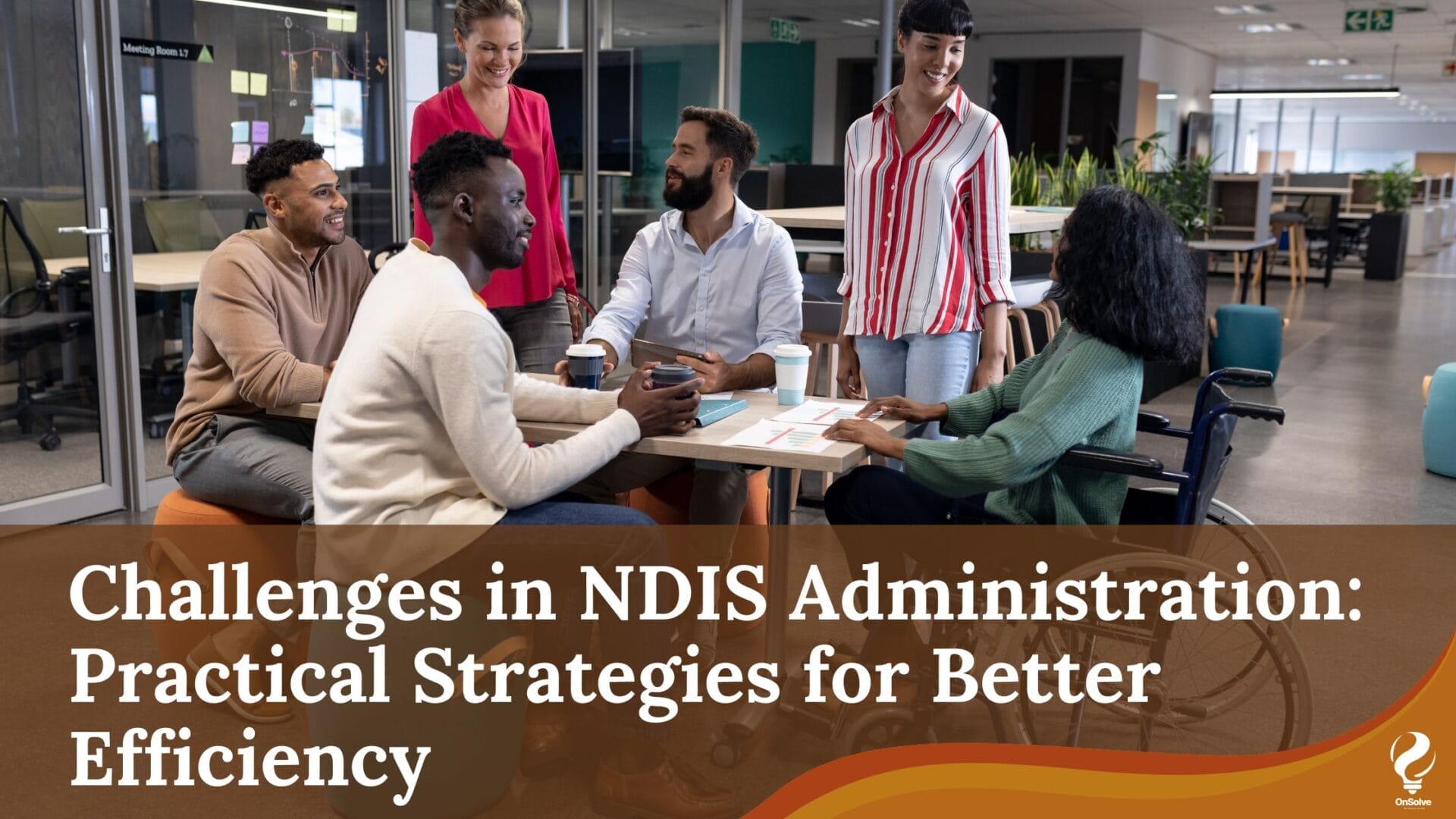In numerous ways, the lives of many Australians have been changed by the National Disability Insurance Scheme (NDIS) by providing essential support to those with disabilities. Nevertheless, service providers may find NDIS administrative pressures quite intimidating. These challenges include understanding complicated regulatory frameworks or dealing with increasing volumes of paperwork, which affect quality service provision. Some of the main administrative challenges facing NDIS providers are considered below, as well as solutions that can be used in overcoming them.
Navigating Compliance Complexities
The challenges faced by service providers in terms of adhering to NDIS regulations pose a heavy burden for them. As rules and standards change frequently, it is important for providers to stay updated with these changes so that they do not fall off the path of non-compliance and thus face penalties while continuing to be registered. The complexities involved in compliance require constant vigilance, as even minor oversights can lead to significant issues, including financial penalties, legal challenges, and reputational damage.
Tip: A compliance management system which ensures that you are up to date with the latest NDIS guidelines for your operations is worth investing in. Regular training on compliance issues for staff members is also necessary. By being aware of various compliance aspects, an organization can prevent mistakes from happening and enhance its service delivery quality. Additionally, regular audits and self-assessments can be incorporated to further ensure that all aspects of compliance are being met consistently. Engaging with legal experts familiar with NDIS regulations can also provide valuable insights and help preempt any potential compliance issues before they arise.
Mastering Resource Management
NDIS providers often face difficulties in balancing resources: time, money, and personnel. Uncoordinated use of resources makes your budget tight and the quality of care that you offer drops. Therefore, ensuring that your resources are well allocated is necessary for maintaining operations and rendering stable services of high quality. The challenge lies not just in allocation but in making real-time adjustments based on the changing needs of both the organization and its participants, ensuring that resources are always used in the most effective manner possible.
Tip: Optimize resource allocation using resource management software. Such tools may assist you monitor staffing levels, manage budgets, and ensure time is spent in places where it’s needed the most. Regularly reviewing your resource allocation strategies can lead to the discovery of different areas needing improvement. This will allow you to adjust and maintain a high standard of care while preventing burnout among staff. Furthermore, involving staff in resource planning can lead to more accurate forecasting and better alignment of resources with actual needs, ensuring that all areas of the service provision are adequately covered, and that staff feel supported in their roles.
Tackling Participant-Centered Challenges
NDIS providers should go beyond their routine administrative tasks to tackle the specific challenges affecting participants. These include adapting to the unique and evolving needs of each participant, ensuring ongoing engagement, and maintaining a high standard of care despite varying circumstances. Such participant-centric challenges must be addressed so that each individual can receive tailored assistance and be supported in an efficient manner. It’s important to remember that every participant’s journey is unique, requiring a flexible approach that can adapt to their changing needs over time.
Tip: While keeping administrative tasks in mind, always prioritize participant requirements by continuously reviewing care plans and including participants and their families in decision-making. Regular feedback collection will reveal areas requiring improvement and show whether the provided services are still in line with what participants wish. Develop an environment where providers can learn continuously and be able to adjust quickly to new circumstances. Additionally, creating individualized care plans that evolve with the participant ensures that their care remains relevant and effective, fostering a stronger relationship between the provider and the participant, which in turn improves overall service outcomes.
Considering NDIS Outsourcing
According to many service providers, outsourcing some administrative tasks can be a strategic method of productivity optimization. Such activities as payroll processing, management of human resources or even compliance monitoring can be given out to experts, thereby enabling the practitioners to concentrate on providing direct support services to the clients. Outsourcing allows providers to leverage expertise they may not have in-house, ensuring that critical tasks are completed accurately and efficiently.
Tip: Understanding which tasks can be effectively outsourced is one of the most important things you should keep in mind. This not only helps lower overhead costs but also reduces the administrative burden on the organization. Furthermore, outsourcing has been observed to bring in specific knowledge into an organization thus ensuring proper execution of jobs that conform to NDIS regulations. Additionally, when deciding to outsource; it is important that you partner with providers who have a thorough understanding of the NDIS framework so that outsourced activities are smoothly integrated into your existing operations and maintain uniformity in service delivery.
Final Thoughts
Steering through the NDIS administration territory doesn’t have to be overwhelming. Using appropriate tools and strategies, providers can confirm their procedures, remain within the law, and direct towards providing optimal care to their participants. Remember, the key to overcoming these challenges lies in being proactive, adaptable, and always putting the needs of participants first. By doing so, service providers can not only meet but exceed the expectations of participants, ensuring that they receive the highest standard of care possible.







